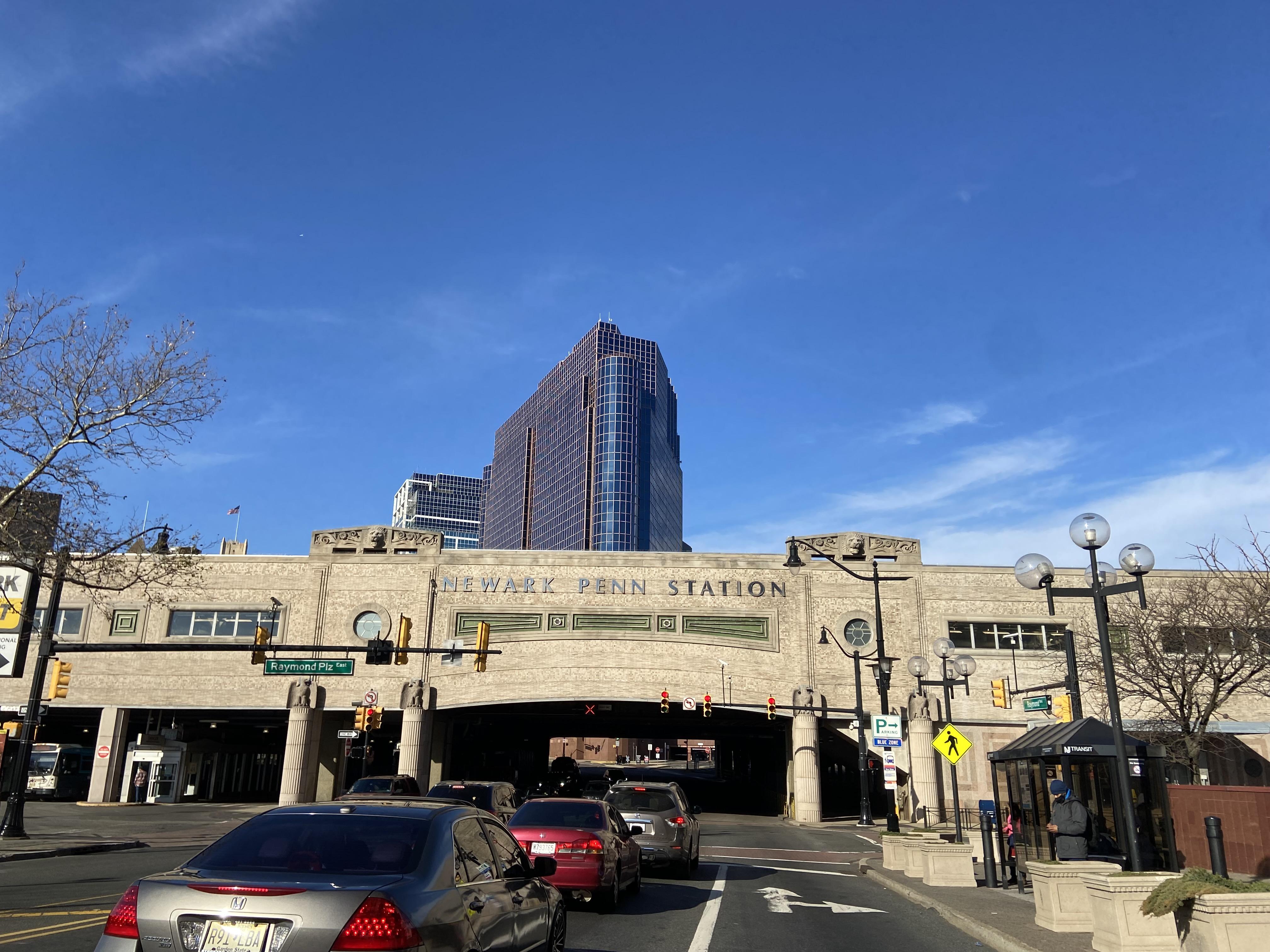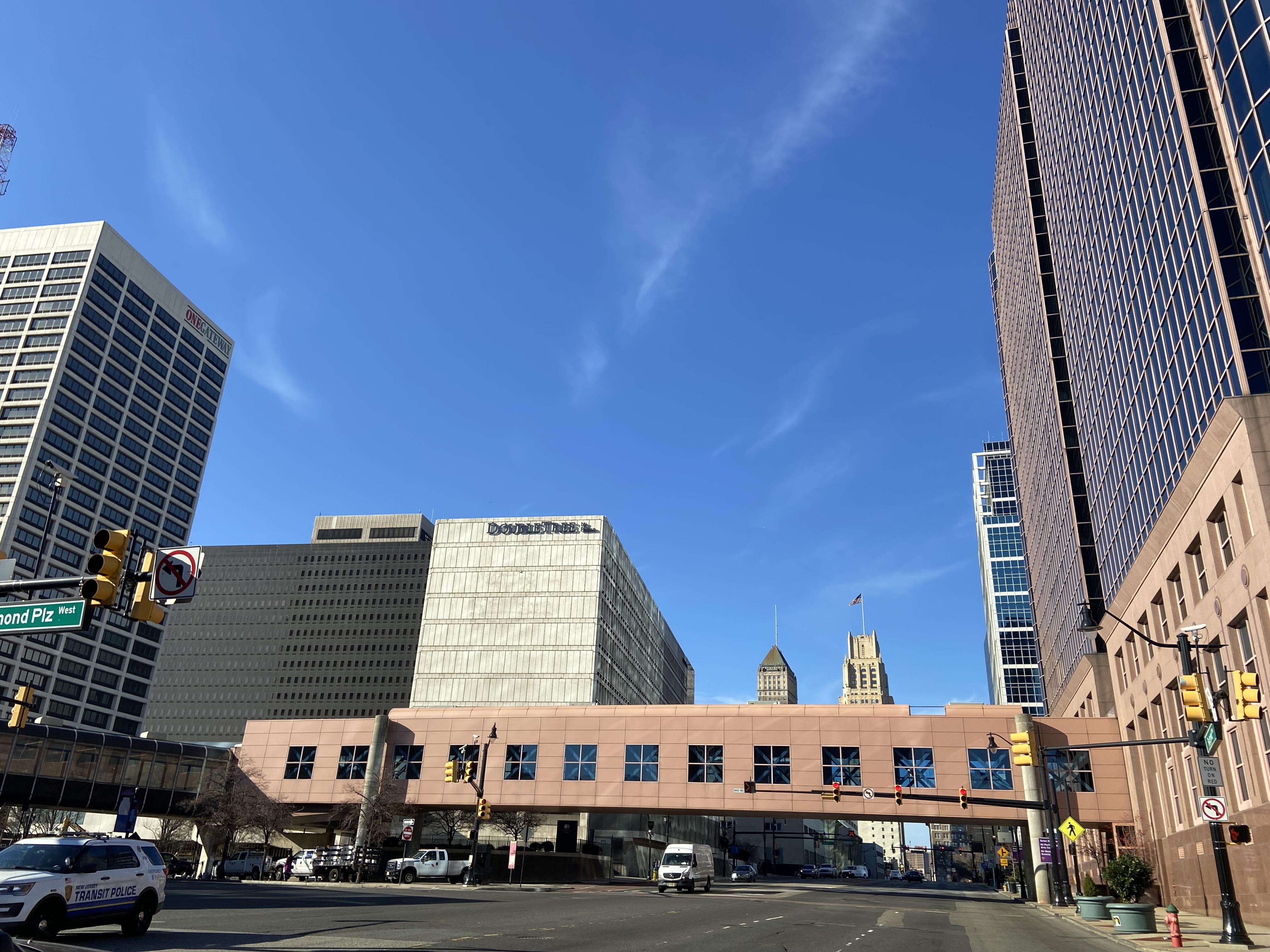Catalyzing Urban Master Planning with Creative Capital

Prof. Darius Sollohub and his students have been researching and developing proposals for the improvements to the Newark Penn Station transportation hub and environs this semester. Their studio has been designing in anticipation of a $190 million investment by New Jersey Transit in these improvements. The studio has been encouraged by the design team of WSP | FX Collaborative (FXC) who have attended reviews, provided input, and supported 3D printing. The purpose of the studio is to transform the area through design, from a congested and unfriendly area on the street level, to a multi program transportation hub that represents the best face of historic Newark and a multi-use public space that people can enjoy.

Designing with the mandate to deliver, as John Schuyler of FXC put it, “the highest and best” use for the interior of the station and exterior adjacent spaces, the effort began with student teams interviewing a range of stakeholders from New Jersey Transit, the City of Newark, developers, and local community groups to garner their wishes for investments at the station. They hence proposed urban design strategies for extending pedestrian access in both directions from the station for pedestrian, bicycle, vehicular, and bus circulation, as well as for outdoor programming, and retail. Once that portion of the studio was completed, students focused on individual designs for underutilized parcels within a half mile of the station. The programs for these parcels include housing, green spaces, retail, amenities, institutions, and parking. The final products will be amassed in a package that will inform future strategies for the station. A gallery of their work can be viewed here.
The class had the benefit of building on the work of two prior studios: Penn Station-related design work sponsored by Edison Properties in the fall of 2017 in a studio taught by Darius Sollohub, and the investigation into redesign of the Gateway Complex in a fall 2020 studio sponsored by Onyx Development and taught by Roger Smith. They tackled a number of challenging design questions, such as what to do with the existing pedestrian walkways opened in 1972 that lead from The Gateway building to the station. Some of the development solutions are already underway.

The importance of good design for urban master planning is that it can create value in shared public spaces that increase the quality of life in urban centers and draw people to live and work in them. Public spaces with walkable streets that invite foot traffic also benefit retailers. Considering plans for the old walkways that were originally designed to keep commuters from having to engage with the city of Newark at all, and a proposal for elevated open park spaces utilizing the walkways by Lucas Konrad-Parisi, Schuyler asks, “Is there a way to take these things and make them a great experience? The notion of a park in the middle of office developments at the Gateway as an urban design strategy is very intriguing. Can the value of some of these adjacent parcels be unlocked, by using that as a central open space?”
Creating value through creative urban design and planning is much of what students explored. The beauty of what students have proposed, to an audience of designers, officials from New Jersey Transit, the City and regional planning boards, property owners and developers, is that they have designed according to what is possible. Students were encouraged to be unconstrained in their search for the best solutions to create a public transportation hub that people enjoy coming to. In so doing they hope to inform the final plans for upcoming projects. Highlights of studio proposals included: a farmers market convenient to commuters, restoration of the historic interior of the station complete with a range retail including eateries, the creation of exterior pedestrian safety islands with lighted and elevated walkways and green spaces, so that the public will feel safe to walk about the area, bike lanes, traffic calming, and street level modular housing with service centers for the currently unhoused population that frequently reside in Newark Penn Station.
Nicolas Arango, who designed those units said, “The housing modules came from a place of necessity. Because homelessness is such a sensitive topic, I wanted to address it architecturally in tandem with policy. Therefore, the housing modules became a means of quickly housing the unsheltered. Since these units are transitional housing, they were designed to be small enough to plug into existing and developing buildings. Ideally, they help channel the homeless population into secure and permanent housing.”

The studio group finalized their work in what they called the ‘Encore’, a presentation where they radically re-envisioned the access to Newark Penn Station from the central Newark along Commerce Street towards what will become a newly restored grand entrance to the station. It is reminiscent of the open plazas of European city centers in the way it connects the hub with the rest of the city.

Prof. Sollohub has made an ongoing point of sharing the creative capital generated in his studios with interested parties in Newark. Some of the design ideas generated have influenced everything from bike lanes to how things have been built. This practice is one of the great traditions coming out of architecture schools around the country, providing students who will soon become architects and urban design professionals access to and experience working with municipal planners, developers, and architecture professionals.
“There is an interesting phenomenon that happens when students work on real projects. Stakeholders often give students enormous latitude; far more than I ever experience as a practitioner. I’m used to expecting a kind of default skepticism from communities potentially impacted by public projects, yet the same skeptics encourage students to embrace creativity and think big, perhaps because there is no downside. If student designs bring new ideas, then the sponsors are perceived as visionaries for embracing the next generation’s ideas. And if those ideas don’t pan out, it’s just shrugged of an academic exercise. Either way, for students it’s always a win-win proposition,” said Sollohub.